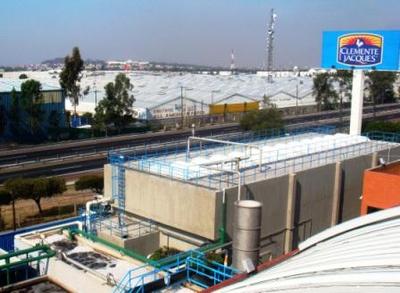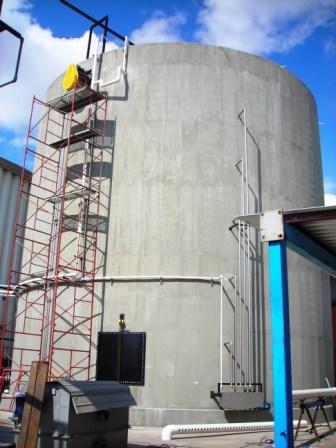GWE green energy technology for food and beverage exporter
Friday, 08 November, 2013
Sabormex, a global exporter of diversified food and beverage products, is capitalising on the benefits of its high-efficiency wastewater treatment plant by installing a GWE complete biogas re-use system to replace fossil fuels with green energy.
The GWE technology involved in the installation, by Sabormex in Mexico, is represented in Australia and New Zealand by CST Wastewater Solutions. The company’s managing director, Michael Bambridge, said such green energy/environmental anaerobic digestion technology is applicable to a host of Australasian industries, including particularly food, beverage and agro industry applications.
Founded in 1964 in the city of Puebla, Sabormex is behind a number of Mexican brands - including Clemente Jacques (sauces and dressings), La Sierra (canned foods) and Tazza, Garat and Familiar (coffee) - which are exported to more than 20 countries. Such diversified production results in fast and significant changes in the composition and flows of the company’s wastewater which, before treatment, often contains high concentrations of fat, oil and grease and generally high levels of total suspended solids and COD.
In order to deal with the variable characteristics of the wastewater, GWE engineered and installed a robust ANUBIX-B anaerobic reactor designed for 24 tonnes of COD per day. The reactor, operating since 2011, has consistently shown very high removals and stable performances.

The plant was built by GWE’s partner ICR Ambiental from Mexico. ICR specialises in the engineering and construction of projects for water and wastewater treatment, solids digestion and power generation. ICR has partnered with GWE in many projects over the years by engineering and building wastewater treatment plants in Latin America.
All the suspended solids and fats sent to the wastewater treatment plant are first separated in a dissolved air flotation installation which generates up to 100 m3 of primary sludge every day. In order to digest this primary sludge, which is very rich in organics, GWE has installed an ANAMIX-T reactor. This is a thermophilic, continuous, stirred-tank reactor which achieves high removals of pollutants, even while fed with a difficult stream containing high concentrations of fat and solids. Up to 10 tonnes of COD per day are fed to the ANAMIX-T, with the system achieving high removal efficiencies of more than 80%.
Startup of the reactor took only a few weeks due to a special seed sludge collected from another GWE ANAMIX-T which had been operating in Belgium for several years. An innovative method of preserving the activity of bacteria, developed by GWE, means the seed sludge can be shipped overseas in regular containers.
Following on from the success of the wastewater plant, Sabormex has subsequently ordered from GWE a complete biogas re-use system in order to burn the biogas generated by the two anaerobic reactors. This will generate 6000 Nm3/day of biogas, allowing savings equivalent to up to 8000 kg fuel oil/day. This plant is also equipped with GWE’s emergency ground flare with temperature-controlled combustion, which is in line with the stringent emission regulations.


Following on from the success of the wastewater plant, Sabormex has subsequently ordered from GWE a complete biogas re-use system in order to burn the biogas generated by the two anaerobic reactors. This will generate 6000 Nm3/day of biogas, allowing savings equivalent to up to 8000 kg fuel oil/day. This plant is also equipped with GWE’s emergency ground flare with temperature-controlled combustion, which is in line with the stringent emission regulations.
The quantity of biogas to be produced by Sabormex is equivalent to about 2650 tonnes of the fossil fuel equivalent per year, worth more than US$2 million in the first year and well over AU$20 million in its first decade.
Bambridge says anaerobic digestion facilities are recognised by the United Nations Development Programme as one of the most useful decentralised sources of energy supply as they are less capital-intensive than large power plants. Anaerobic biogas plants are among more than 300 GWE anaerobic wastewater plants globally, which clean the water to high discharge standards while producing biogas (methane, CH4) that can be used to generate green electricity for sale to the local grid or to fuel boilers and other factory plant fuel consumers.
A first line of defence in wastewater screening
Two Queensland councils have opted for Australian-manufactured screening technology to protect...
Beef processor selects wastewater pump solution for dual purpose
John Dee Warwick wanted to upgrade its wastewater pump system to handle the day-to-day flows...
Melbourne Water finds an energy-saving solution
Sewage and wastewater treatment is a highly energy-intensive process, presenting a challenge for...










